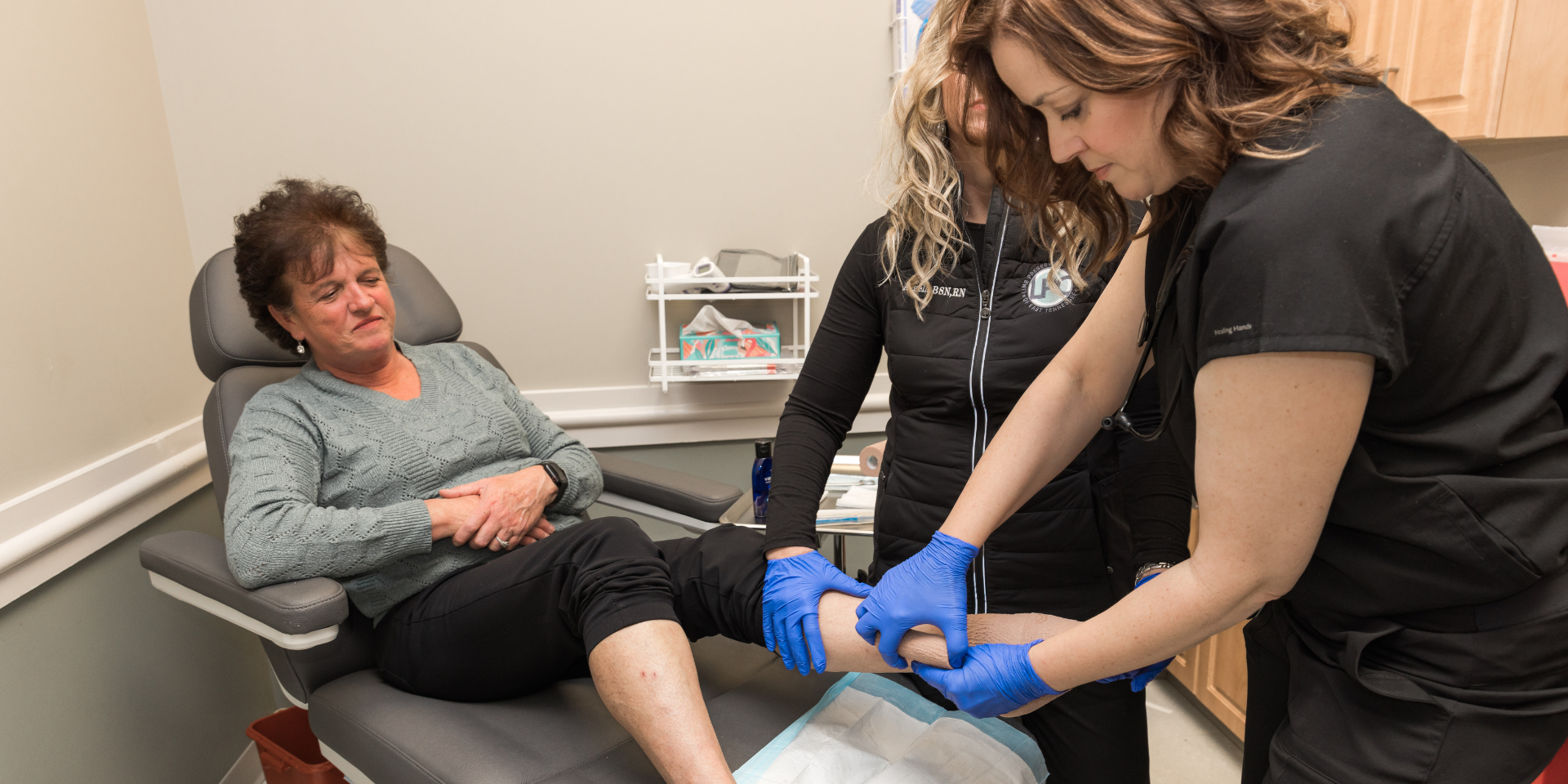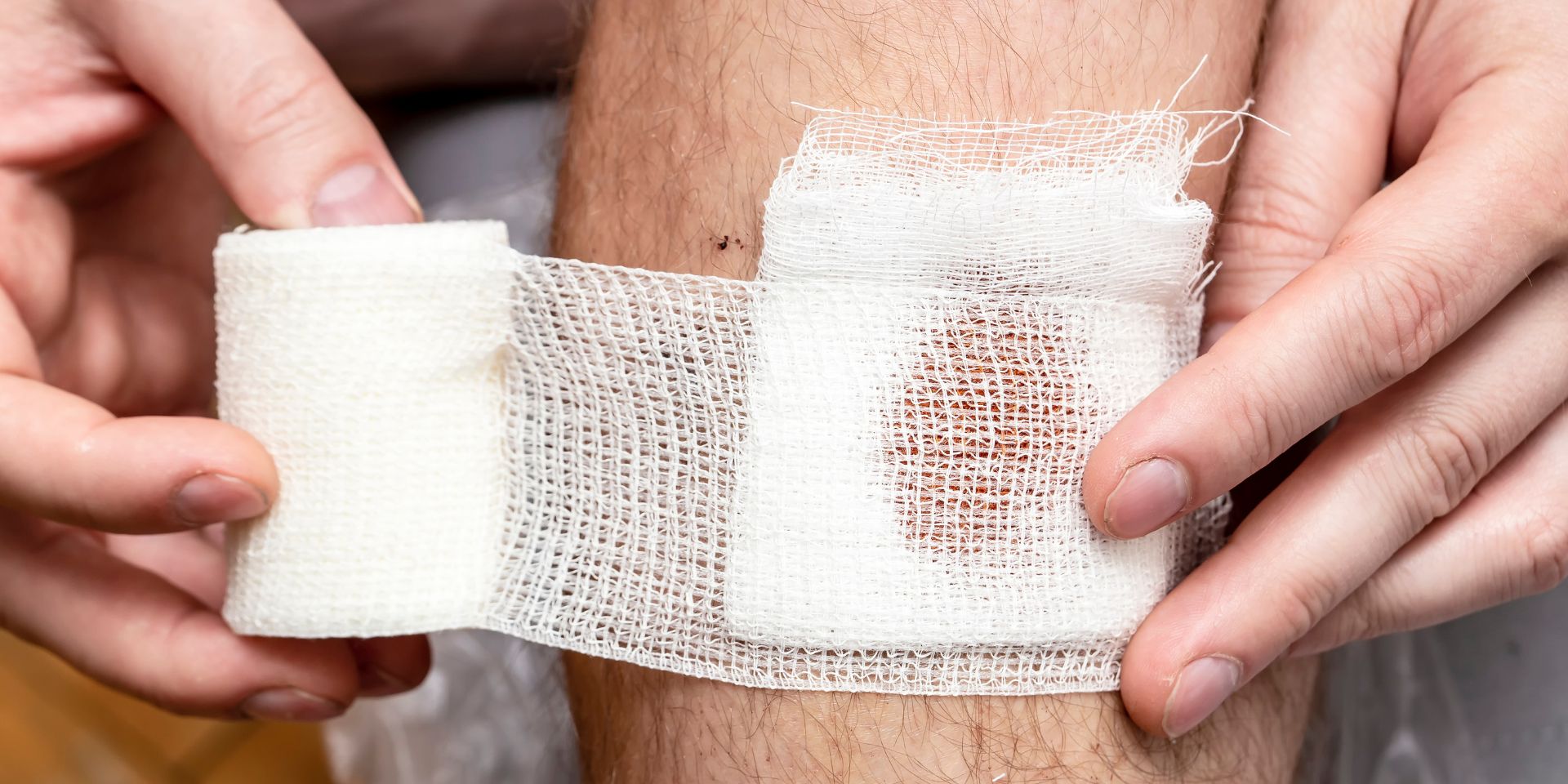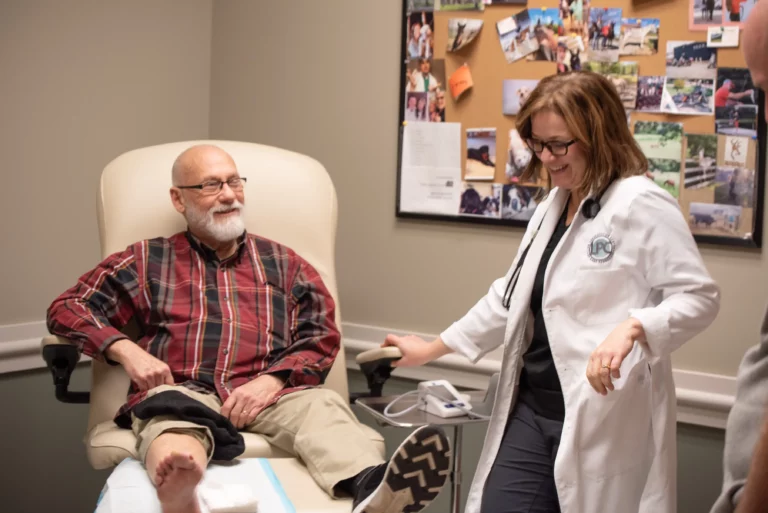Learning how to prevent diabetic foot ulcers is crucial if you have diabetes. These ulcers can significantly impact your overall health and quality of life, potentially leading to severe complications like infections and amputations. By implementing proper foot care and lifestyle changes, you can reduce your risk of developing these troublesome ulcers.
Preventing diabetic foot ulcers is vital for those with diabetes. Key strategies include managing blood sugar levels, establishing a daily foot care routine, and wearing suitable footwear. These practices minimize nerve damage and circulation issues. Additionally, promptly addressing minor foot problems can prevent serious complications. Regular medical check-ups and maintaining a healthy lifestyle further enhance foot health.
What are Diabetic Foot Ulcers?
Diabetic foot ulcers are open sores or wounds that typically occur on the bottom of the foot in people with diabetes. These ulcers are a serious complication affecting approximately 15% of diabetic patients and can lead to infections, hospitalizations, and amputations in severe cases
Causes
The primary causes of diabetic foot ulcers include:
- High blood sugar levels
- Poor circulation
- Nerve damage
- Immune system issues
High blood sugar levels stiffen arteries and narrow blood vessels, impeding healing. Diabetes also increases the risk of peripheral arterial disease, resulting in poor circulation.
Nerve damage (neuropathy) leads to decreased sensation, making it difficult to detect injuries. Additionally, diabetes can lead to immune system issues, reducing the body’s ability to fight infections. These combined factors create an environment conducive to ulcer formation and slow healing.
Symptoms and signs
There are a number of symptoms and signs that you may have a diabetic foot ulcer. Common signs of diabetic foot ulcers include redness, swelling, and warmth around the affected area. This is often accompanied by open wounds on pressure points like the ball, heel, or toe.
You may also experience:
- Numbness or loss of feeling in the feet
- Drainage of fluid in socks or shoes
- Skin discoloration
- Callus formation
Foot pain or discomfort are also signs, but some ulcers may be painless due to nerve damage.
Early detection and proper management are vital in preventing the progression of these ulcers and their potentially severe complications.
How to Prevent Diabetic Foot Ulcers
How to prevent diabetic foot ulcers is a common concern if you have diabetes. Fortunately, there are some simple steps you can take to help keep them at bay. This includes managing blood sugar levels, maintaining a daily foot care routine, and wearing appropriate footwear.
These steps help reduce the risk of nerve damage, poor circulation, and complications. Promptly address minor foot issues to prevent them from escalating into serious wounds.
Manage blood sugar levels

Managing blood sugar levels is crucial in preventing diabetic foot ulcers. Elevated glucose stiffens arteries and narrows blood vessels, restricting blood flow and oxygen needed for healing.
By controlling blood sugar, patients can reduce the risk of nerve damage and poor circulation, which are major contributors to ulcer formation. Proper glucose management also supports the body’s natural healing abilities and immune function, further lowering ulcer risk. For adults with diabetes, optimal blood sugar levels are generally considered to be between 80 to 130 mg/dL before meals and less than 180 mg/dL two hours after meals.
To manage blood sugar levels effectively, incorporate regular exercise and maintain a balanced diet rich in fiber and low in refined carbohydrates. Be sure to stay hydrated, manage stress, get adequate sleep, and monitor portion sizes.
Daily foot care routine
A daily foot care routine is essential when it comes to how to prevent diabetic foot ulcers. It should include:
- Washing feet with warm water and mild soap
- Drying them thoroughly, especially between your toes
- Moisturizing dry areas
Daily inspections help detect early signs of problems like cuts, blisters, or redness. This routine helps maintain foot health and allows for prompt treatment of minor issues before they escalate.
Wear appropriate footwear
Appropriate footwear helps prevent diabetic foot ulcers by reducing plantar pressure and protecting feet from injury. Shoes with ample cushioning, support, and a wide toe box accommodate foot shape and minimize friction.
Footwear brands that are ideal for helping prevent foot ulcers include:
- Dr. Comfort
- Orthofeet
- Propét
Custom-made footwear can provide targeted pressure relief for high-risk areas. Breathable materials prevent moisture buildup, while seamless interiors reduce skin irritation. Proper fit is crucial, as ill-fitting shoes can cause blisters and calluses that may lead to ulcers.
Regular medical check-ups
Regular medical check-ups are another important part of how to prevent diabetic foot ulcers. They help by allowing healthcare professionals to detect early signs of problems. During these exams, your doctor assesses:
- Foot pulses
- Sensation
- Overall health
Your doctor is trained to identify risk factors, provide early interventions, and offer personalized advice on foot care. These check-ups also allow for timely treatment of small issues before they escalate into ulcers, reducing the risk of severe complications.
Maintain a healthy lifestyle

Maintaining a healthy lifestyle is essential for preventing diabetic foot ulcers.
Regular exercise improves blood circulation and helps control blood sugar levels. A balanced diet rich in fruits, vegetables, whole grains, and lean proteins supports overall health and diabetes management. Quitting smoking and limiting alcohol consumption reduce the risk of complications.
These habits collectively improve blood flow, strengthen your immune system, and promote better foot health.
Treat minor foot problems promptly
Prompt attention to small issues like cuts, blisters, or ingrown toenails prevents them from developing into more serious wounds. Early intervention is crucial for how to prevent diabetic foot ulcers, allowing for proper cleaning, medication, and pressure relief, promoting faster healing, and reducing the risk of infection.
This proactive approach significantly lowers the chances of minor problems escalating into ulcers, which can lead to severe complications in diabetic patients.
Limb Preservation Center is Here for You
The Limb Preservation Center of East Tennessee specializes in treating chronic wounds, including diabetic foot ulcers. As East Tennessee’s premier advanced wound care facility, we offer comprehensive evaluation and innovative treatments. We take a holistic approach to your care, collaborating with local specialists to address your overall health.
Our focus on limb preservation aims to prevent amputations by promoting:
- Wound healing
- Resolving infections
- Preventing future wounds
With our expertise and advanced treatments, we provide tailored care for your diabetic foot ulcers, improving outcomes and your quality of life.

Understanding how to prevent diabetic foot ulcers is crucial for individuals with diabetes. Key measures include managing blood sugar levels, practicing daily foot care, and wearing proper footwear to reduce nerve damage and circulation issues. Regular medical check-ups, addressing minor foot problems promptly, and maintaining a healthy lifestyle further support foot health and ulcer prevention.
Limb Preservation Center of East Tennessee is the newest and most advanced wound care practice in Lenoir City, Tennessee. Are you looking for experienced wound care that’s convenient and near home? Call Limb Preservation Center of East Tennessee at 865-770-5462 or request an appointment online to arrange a comprehensive chronic wound evaluation with our wound healing experts.






